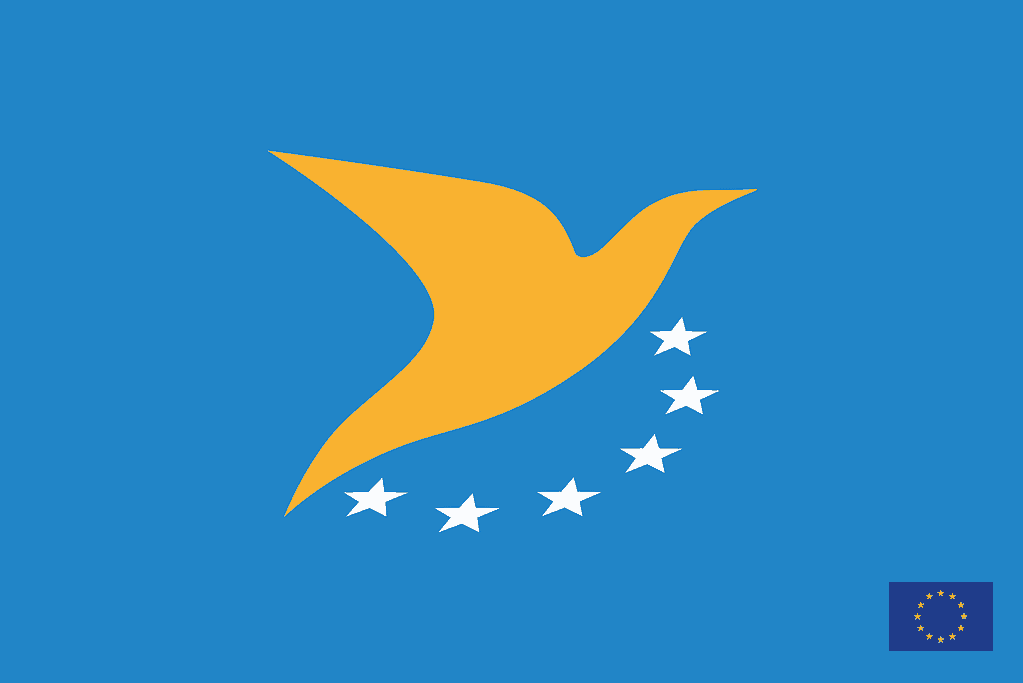Summary of Drone Laws in Mongolia
Hobbyist Drone Laws For Residents of Mongolia
Drone Operations in Mongolia are currently regulated.
- Hobbyist drone flights are allowed in Mongolia
- Hobbyist Mongolia drone pilot license is not required
- Hobbyist Drone registration is required in Mongolia for hobbyists
- Drone Remote ID is not required in Mongolia for hobbyists
- Drone Insurance is not required but recommended for hobbyists’ drone operations in Mongolia
Read below for more details on Hobbyist Drone Laws in Mongolia and to find links to regulators and other credible sources!
Commercial Drone Laws For Residents of Mongolia
Drone Operations in Mongolia are currently regulated.
- Commercial drone flights are allowed in Mongolia
- Commercial Mongolia drone pilot license is required
- Commercial Drone registration is required in Mongolia for commercial drone operators
- Drone Remote ID is not required in Mongolia for Commercial Drone Operators
- Drone Insurance is not required for commercial drone operations in Mongolia
Read below for more details on Commercial Drone Laws in Mongolia and to find links to regulators and other credible sources!
Drone Regulations For Visitors To Mongolia
Drone Operations in Mongolia are currently regulated.
- Foreign visitor drone flights are allowed in Mongolia
- Foreign visitor drone pilot license is required
- Drone registration is required in Mongolia for visitors/tourists
- Drone Remote ID is not required in Mongolia for tourists
- Drone Insurance is not required but recommended for tourist drone operations in Mongolia
Read below for more details on Drone Laws in Mongolia for Visitors (Tourists) and to find links to regulators and other credible sources!
Drone Rules For Government Drone Operators in Mongolia
Drone Operations in Mongolia are currently regulated.
- Government drone flights are allowed in Mongolia
- Government drone pilot license is required
- Drone registration is required in Mongolia for Government operations
- Drone Remote ID is not required in Mongolia for Government operations
- Drone Insurance is not required for Government drone operations in Mongolia
Read below for more details on Drone Laws in Mongolia for Government Drone Operations and to find links to regulators and other credible sources!
Agencies Responsible for regulating drones in Mongolia
Drone Regulator in Mongolia: Civil Aviation Authority of Mongolia (CAAM)
UAS Laws – General rules for flying drones in Mongolia
The Mongolian agency responsible for drone safety, CAAM, has provided several internet-accessible details on flying for fun or work. The highlights are enumerated below. For more details go to the link above.
Are drones allowed in Mongolia?
CAAM states that drone operations are allowed in Mongolia, subject to CAAM regulations. Read on for more details.
Here are the most important rules to know for flying a drone in Mongolia
Please contact ops@mcaa.gov.mn or +976-11-285013 (telephone) for remote-controlled aircraft permission, restriction, and certifications.
Part 101 Requirements for drone operations in Mongolia
The drone operator must not operate an unmanned aircraft within a restricted area, military operating area, or dangerous area unless the person has approval from the administering authority responsible for the area.
You must not operate any of the following in controlled airspace without prior authorization from the ATC unit responsible for that airspace
The drone operator must take all practicable steps to minimize hazards to persons, property, and other aircraft.
A person must not operate a remotely piloted aircraft or a free flight model aircraft on or within 4 km of-
- an uncontrolled aerodrome, unless-
- the operation is undertaken in accordance with an agreement with the aerodrome operator; and
- in the case of a free flight model aircraft, the aircraft is launched downwind of an active runway; and
- in the case of a remotely piloted aircraft-
- each pilot has an observer in attendance while the aircraft is in flight; and
- The aircraft is not operated at a height of more than 400 feet (120 m) AGL unless the Director has approved the operator to operate the aircraft above 400 feet (120 m) AGL; and
- a controlled aerodrome, unless it is operated in accordance with authorization from the relevant ATC unit; and
- any aerodrome, unless-
- the person-
- is the holder of, or is under the direct supervision of the holder of, a pilot qualification issued by an approved person or organization; or
- is under the direct supervision of a person appointed to give instruction in the operation of remotely piloted aircraft by an approved person or organization; or
- is the holder of a pilot license or certificate.
- the person-
A person must not operate a remotely piloted aircraft, a control line model aircraft, or a free flight model aircraft-
- on or over any active movement area of an aerodrome; or
- on or over any active runway strip area.
A person operating a remotely piloted aircraft must-
- unless operating in a dangerous area under Part 71, avoid operating-
- in the airspace above persons who have not given consent for the aircraft to operate in that airspace; and
- above property, unless prior consent has been obtained from any persons occupying that property or the property owner; and
- maintain observation of the surrounding airspace in which the aircraft is operating for other aircraft; and
- not operate the aircraft at any height above 400 feet (120 m) AGL except per paragraph (3).
- Nothing in paragraph (a) requires a person to obtain consent from any person if operating under the authority of an approved organization.
- A person operating a remotely piloted aircraft more than 4km from an aerodrome boundary and above 400 feet AGL must ensure that the operation remains within Class G airspace and must-
- Operate in a dangerous area designated for that purpose under Part 71; or
- Ensure that at least 24 hours before the operation, a person authorized by an approved person or organization notifies the aeronautical information service provider, for the issue of a NOTAM, of the following information:
- The name, address, and telephone number of the operator:
- The location of the proposed operation:
- The date, time, and duration of the proposed operation:
- The maximum height AGL proposed for the aircraft operation.
- A person must not operate an aircraft to which this rule applies in
- any area in which the person’s view of the surrounding airspace in which the aircraft will operate is obstructed or
- meteorological conditions that obstruct the person’s ability to maintain a visual line of sight of the aircraft.
- A person who operates an aircraft to which this rule applies must, at all times-
- maintain visual line of sight with the aircraft, and
- be able to see the surrounding airspace in which the aircraft is operating, and
- operate the aircraft below the cloud base.
- A person must not operate a remotely piloted aircraft or free flight model aircraft at night unless the operation is-
- indoors; or
- a shielded operation.
- A person must not operate a remotely piloted aircraft, a control line model aircraft, or a free-flight model aircraft with a gross mass of over 25 kg.
- A person must not operate a remotely piloted aircraft with a gross mass of between 15 kg and 25 kg unless the aircraft, and any modification made to it, is
- constructed under the authority of, or inspected and approved by CAAM; and
- Operated under the authority of a CAAM-approved person or organization.
Unmanned Operator Certification Requirements for Drone Flights in Mongolia
If you are not following Part 101 requirements, you must apply for an Unmanned Operator Certificate issued by the CAAM
You may also apply for the certificate if flying under Part 101 requirements.
Applying for an Unmanned Aircraft Operator Certificate in Mongolia
You apply by submitting an application to the Director in form CAA 24102/01 and paying the applicable fee.
An application must include the following-
- the name and address for service in Mongolia of the applicant; and
- the details of the operations specification; and
- the applicant’s exposition (see below); and
- The CAAM may require any other information relating to the application.
Unmanned Aircraft Operator exposition
An applicant for an unmanned aircraft operator certificate must provide the Director with an exposition that is acceptable to the Director. The exposition must address the following matters about the nature, degree, and risk of the intended operation-
- the identification of a person who will have primary responsibility for the operation; and
- the identification of any person who is to have or is likely to have control over the exercise of the privileges under the certificate; and
- details of the physical locations to be used in the operation; and
- a hazard register that-
- identifies the known and likely hazards to people, property, and other aircraft of the proposed operation; and
- for each of the hazards identified, including an assessment of the associated risks; and
- includes a description of the measures that can be implemented to mitigate or manage the risk; and
- procedures for reporting information to the Civil Aviation Authority; and
- operating requirements for personnel licensing, qualifications, training, and competency, including pilot and support crew qualifications, training, or medical requirements; and
- details of the number and specifications of the aircraft to be used, including any identification system used on the aircraft (for example, paint schemes, unique identification numbers, markings); and
- details of the control system to be used to pilot the aircraft; and
- procedures for the maintenance of aircraft and measures to ensure continued airworthiness; and
- inflight procedures, including minimum distances from persons or property; and
- procedures for handling cargo or dropping items, if such operations are intended; and
- initial airworthiness standards that must be met; and
- procedures for controlling, amending, and distributing the exposition; and
- any other approvals that are required to conduct the proposed operation.
Notes for recreational drone pilots flying for fun in Mongolia
Follow the general rules listed above, but check for updates by visiting the regulator’s links provided.
Notes for operating Commercial Drone Services in Mongolia
Follow the general rules listed above, but check for updates by visiting the regulator’s links provided.
Useful published information on flying drones in Mongolia
Here is a sample of what you might expect if you follow the drone laws and fly in Mongolia…
Authoritative Sources of Information on Mongolia Drone Laws
We will attempt to keep an updated list of online authoritative links to regulators and other official websites here:
- Drone Regulator Website: Civil Aviation Authority of Mongolia (CAAM)
- Link To SUAS Laws: N/A
- No Fly Zone Maps/Locations: N/A
- UAV Registration Site: N/A
- Drone Operator Licensing Site: N/A
- Others: N/A
NOTE: This page is about the Regulation of Unmanned Aerial Vehicles: Small Unmanned Aerial Systems (SUAS), Small UAS, Remote Piloted Aerial Systems (RPAS), unmanned aerial vehicle (UAV), Unmanned Aerial System (UAS), and drone are interchangeable terms unless specified. Model Aircraft, toy, remote-controlled, and RC aircraft may be covered by the same regulations unless specified.
Find out why
We think you must use a Drone Preflight Checklist
And a Drone Post-flight checklist
Free Drone Flight Checklist PDF
This Drone Flight Checklist is better than others.
It’s free!
It includes both the preflight checklist and post-flight checklist
It’s an easy-to-use printable PDF that covers all your bases.
Traveling with a Drone?
Click here to read our Comprehensive Guide For Traveling With A Drone.
NOW IT’S YOUR TURN




Leave a Comment